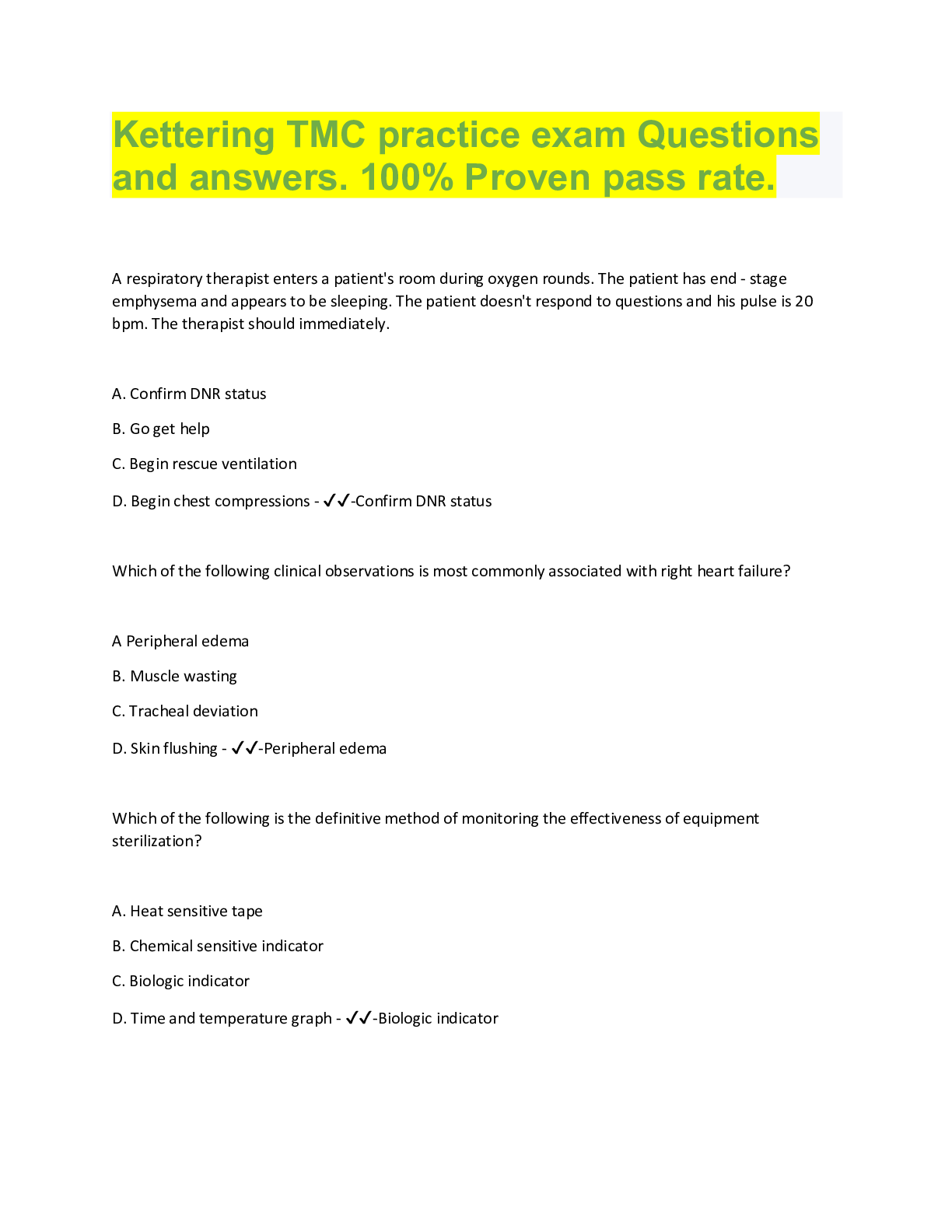*NURSING > QUESTIONS & ANSWERS > AHA PALS Practice exam Questions and Answers Rated A (All)
AHA PALS Practice exam Questions and Answers Rated A
Document Content and Description Below
AHA PALS Practice exam Questions and Answers Rated A 1. A 5-year-old child presents with lethargy, increased work of breathing, and pale color. The primary assessment reveals that the airway is ope... n and the respiratory rate is 30/min, with crackles heard on auscultation. The cardiac monitor shows sinus tachycardia at a rate of 165/min. The pulse oximeter displays an oxygen saturation of 95% and a pulse rate of 93/min. On the basis of this information, which of the following provides the best interpretation of the oxygen saturation of 95% by pulse oximetry? A. Reliable; no supplementary oxygen is indicated B. Reliable; supplementary oxygen should be administered C. Unreliable; no supplementary oxygen is indicated D. Unreliable; supplementary oxygen should be administered Correct Answer-Unreliable; supplementary oxygen should be administered 2. A 3-year-old child was recently diagnosed with leukemia and has been treated with chemotherapy. The child presents with lethargy and a high fever. Heart rate is 195/min, respiratory rate is 36/min, blood pressure is 85/40 mm Hg, and capillary refill time is less than 2 seconds. What is the child's most likely condition? A. Septic shock B. Hypovolemic shock C. Significant bradycardia D. Cardiogenic shock Correct Answer-Septic shock 3. A 2-week-old infant presents with irritability and a history of poor feeding. Blood pressure is 55/40 mm Hg. What term describes this infant's blood pressure? A. Hypotensive B. Normal C. Hypertensive D. Compensated Correct Answer-Hypotensive 4. During a resuscitation attempt, the team leader orders an initial dose of epinephrine at 0.1 mg/kg to be given 10. What should the team member do? A. Administer the drug as ordered B. Administer 0.01 mg/kg of epinephrine C. Respectfully ask the team leader to clarify the dose D. Refuse to administer the drug Correct Answer-Respectfully ask the team leader to clarify the dose 5. Which of the following is a characteristic of respiratory failure? A. Inadequate oxygenation and/or ventilation B. Hypotension C. An increase in serum pH (alkalosis) D. Abnormal respiratory sounds Correct Answer-Inadequate oxygenation and/or ventilation 6. Which of the following is most likely to produce a prolonged expiratory phase and wheezing? A. Disordered control of breathing B. Hypovolemic shock C. Lower airway obstruction D. Upper airway obstruction Correct Answer-Lower airway obstruction 7. A 4-year-old child presents with seizures and irregular respirations. The seizures stopped a few minutes ago. Which of the following most likely to be abnormal? A. Vascular resistance B. Pulse rate C. Lung compliance D. Control of breathing Correct Answer-Control of breathing 8. What abnormality is most likely to be present in children with acute respiratory distress caused by lung tissue disease? A. Decreased oxygen saturation B. Stridor C. Normal respiratory rate D. Decreased respiratory effort Correct Answer-Decreased oxygen saturation 9. An alert 2-year-old child with an increased work of breathing and pink color is being evaluated. Heart rate is 110/min, and respiratory rate is 30/min. What would best describe this patient's condition? A. Respiratory distress B. Respiratory arrest C. Respiratory failure D. Disordered control of breathing Correct Answer-Respiratory distress 10. The parents of a 7-year-old child who is undergoing chemotherapy report that the child has been febrile and has not been feeling well, with recent onset of lethargy. Assessment reveals the following: The child is difficult to arouse, with pale color. The child's heart rate is 160/min, respiratory rate is 30/min, blood pressure is 76/45 mm Hg, capillary refill time is 5 to 6 seconds, and temperature is 103°F (39.4°C). What is the most appropriate intervention? A. Obtain vascular access and administer 20 mL/kg of isotonic crystalloid over 30 minutes B. Obtain vascular access and administer 20 mL/kg of isotonic crystalloid over 5 to 10 minutes C. Obtain immediate blood cultures and chest x-ray D. Obtain expert consultation with an oncologist to determine the chemotherapeutic regimen Correct Answer-Obtain vascular access and administer 20 mL/kg of isotonic crystalloid over 5 to 10 minutes 11. A 2-year-old child presents with a 4-day history of vomiting. The initial impression reveals an unresponsive child with intermittent apnea and mottled color. Heart rate is 166/min, respiratory rate is now being supported with bag-mask ventilation, capillary refill time is 5 to 6 seconds, and temperature is 102°F (38.9°C). What is the best method of establishing immediate vascular access? A. Two providers may attempt peripheral vascular access twice each B. Three providers may attempt peripheral vascular access once each C. Place a central venous line D. Place an intraosseous line Correct Answer-Place an intraosseous line 12. What is the appropriate fluid bolus to administer for a child with hypovolemic shock with adequate myocardial function? A. 10 mL/kg normal saline B. 20 mL/kg of 5% dextrose and 0.2% sodium chloride C. 20 mL/kg normal saline D. 10 mL/kg lactated Ringer's Correct [Show More]
Last updated: 1 year ago
Preview 1 out of 17 pages
.png)
Also available in bundle (2)
.png)
PALS BUNDLED EXAMS QUESTIONS AND ANSWERS ALREADY PASSED
PALS BUNDLED EXAMS QUESTIONS AND ANSWERS ALREADY PASSED
By Nutmegs 1 year ago
$27
25
.png)
PALS Bundled Exams with complete solutions(Everything is here)
PALS- Pediatric Advanced Life Support Exam 2022(Graded B+) PALS - Written Test and Case Study Review Material with complete solution PALS - Red Cross Final Exam 2021(Already graded A) 50 Questions and...
By Nutmegs 1 year ago
$20
13
Reviews( 0 )
Document information
Connected school, study & course
About the document
Uploaded On
Aug 08, 2022
Number of pages
17
Written in
Additional information
This document has been written for:
Uploaded
Aug 08, 2022
Downloads
0
Views
172

.png)
.png)
.png)
.png)
.png)
.png)


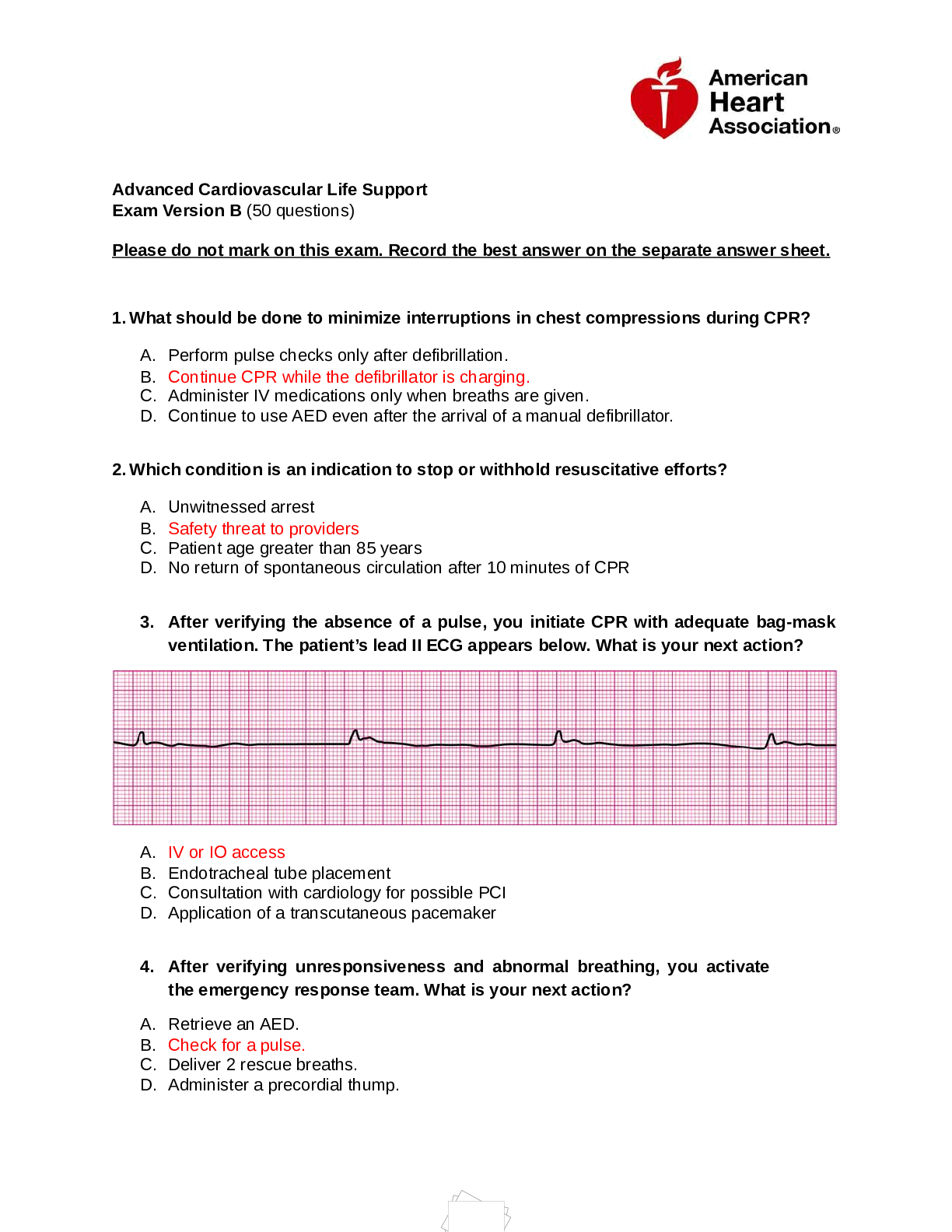


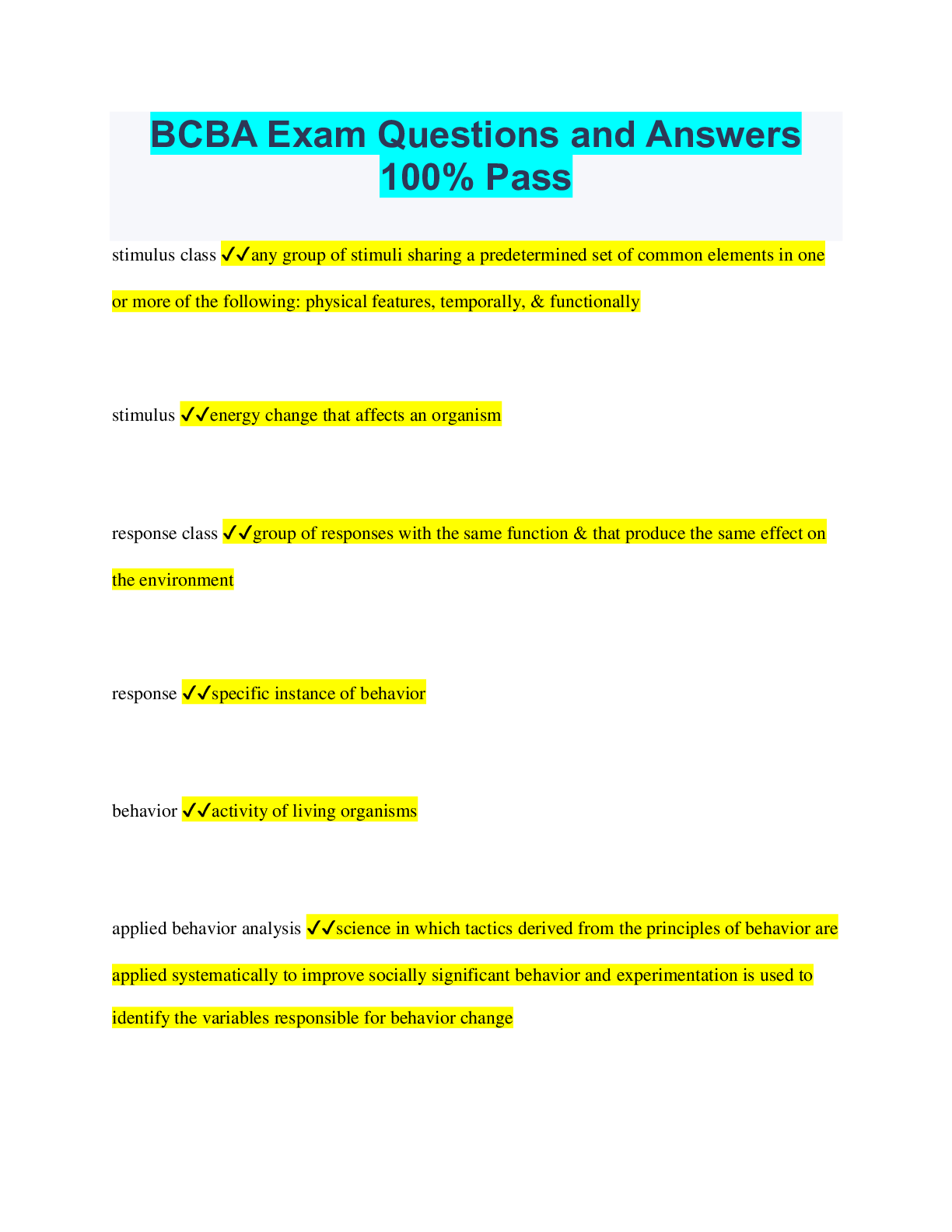
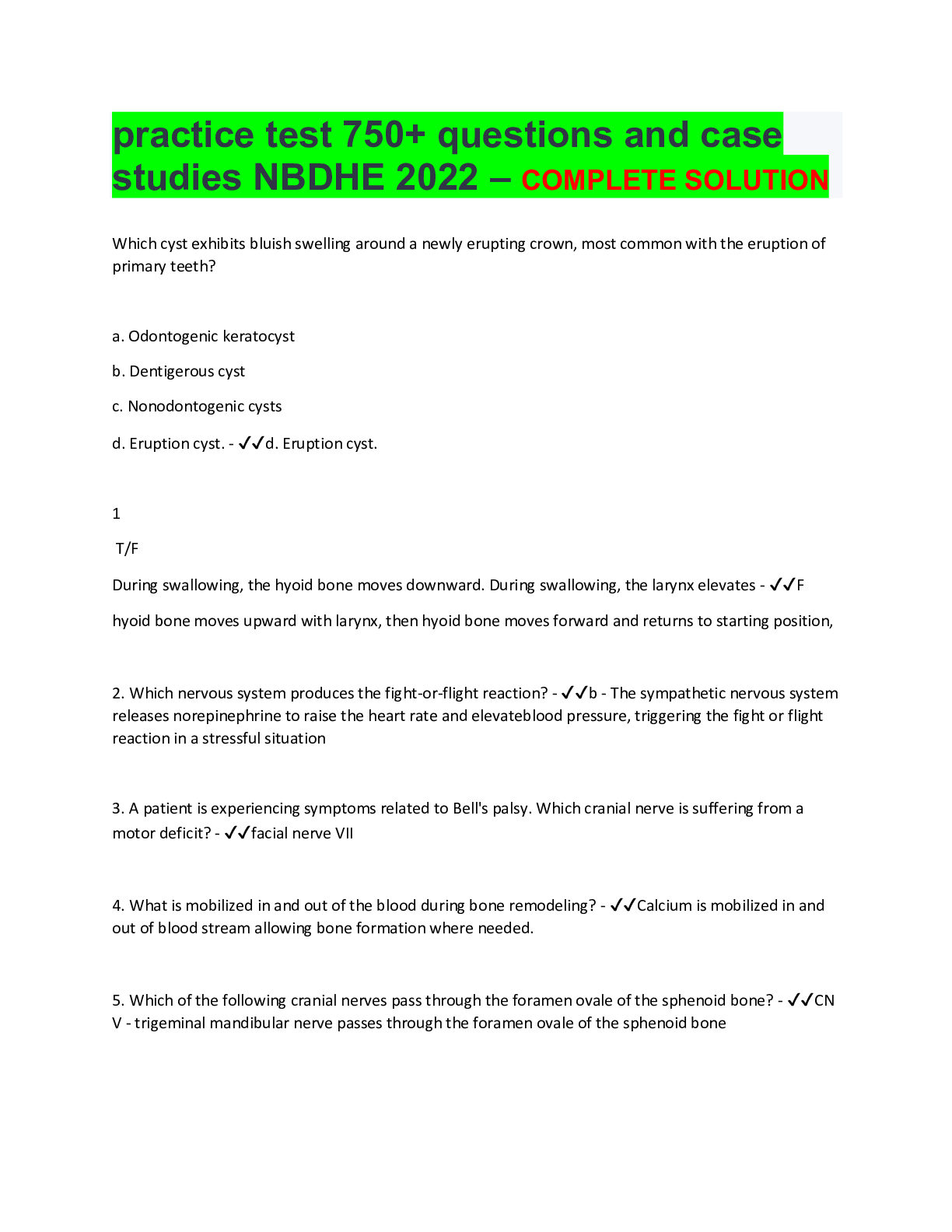
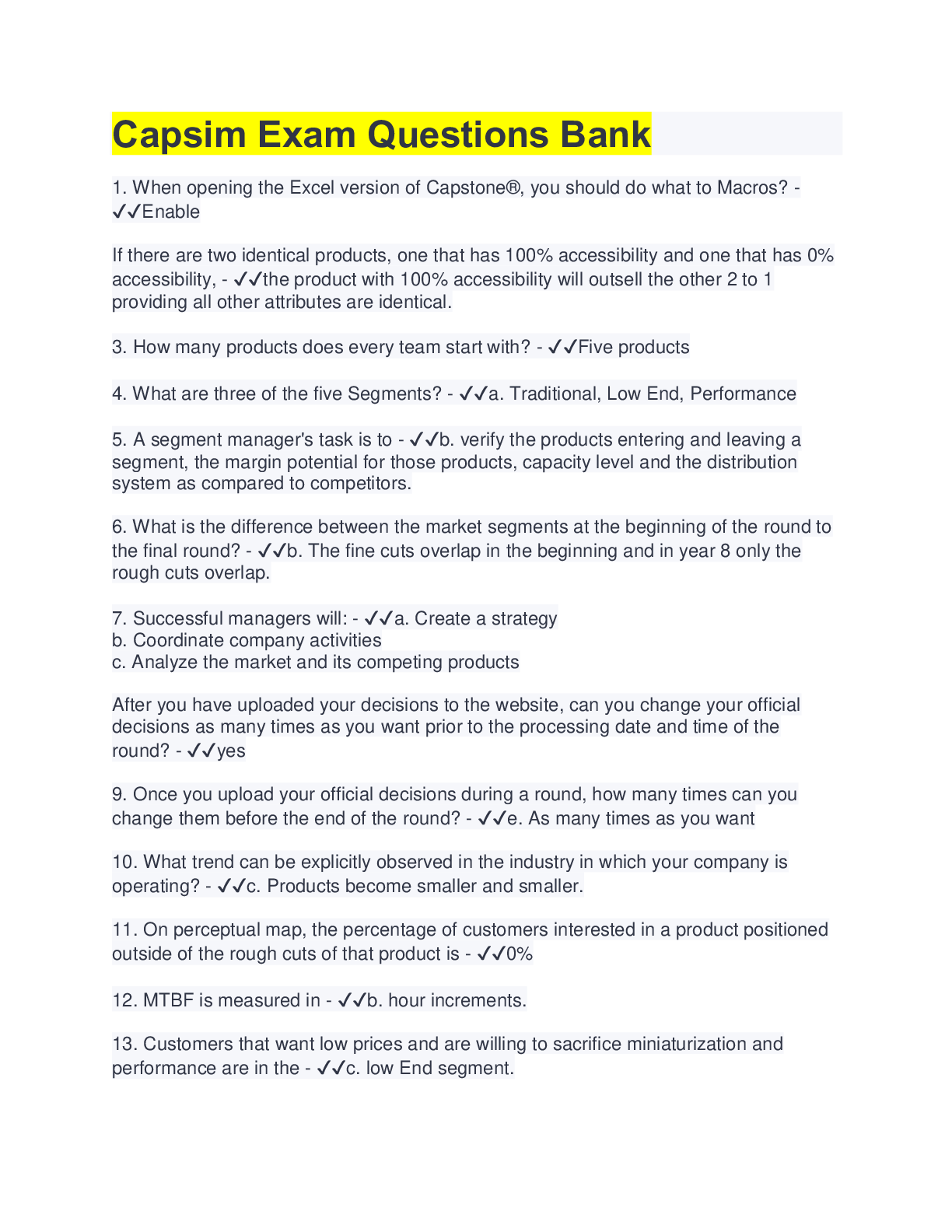

.png)

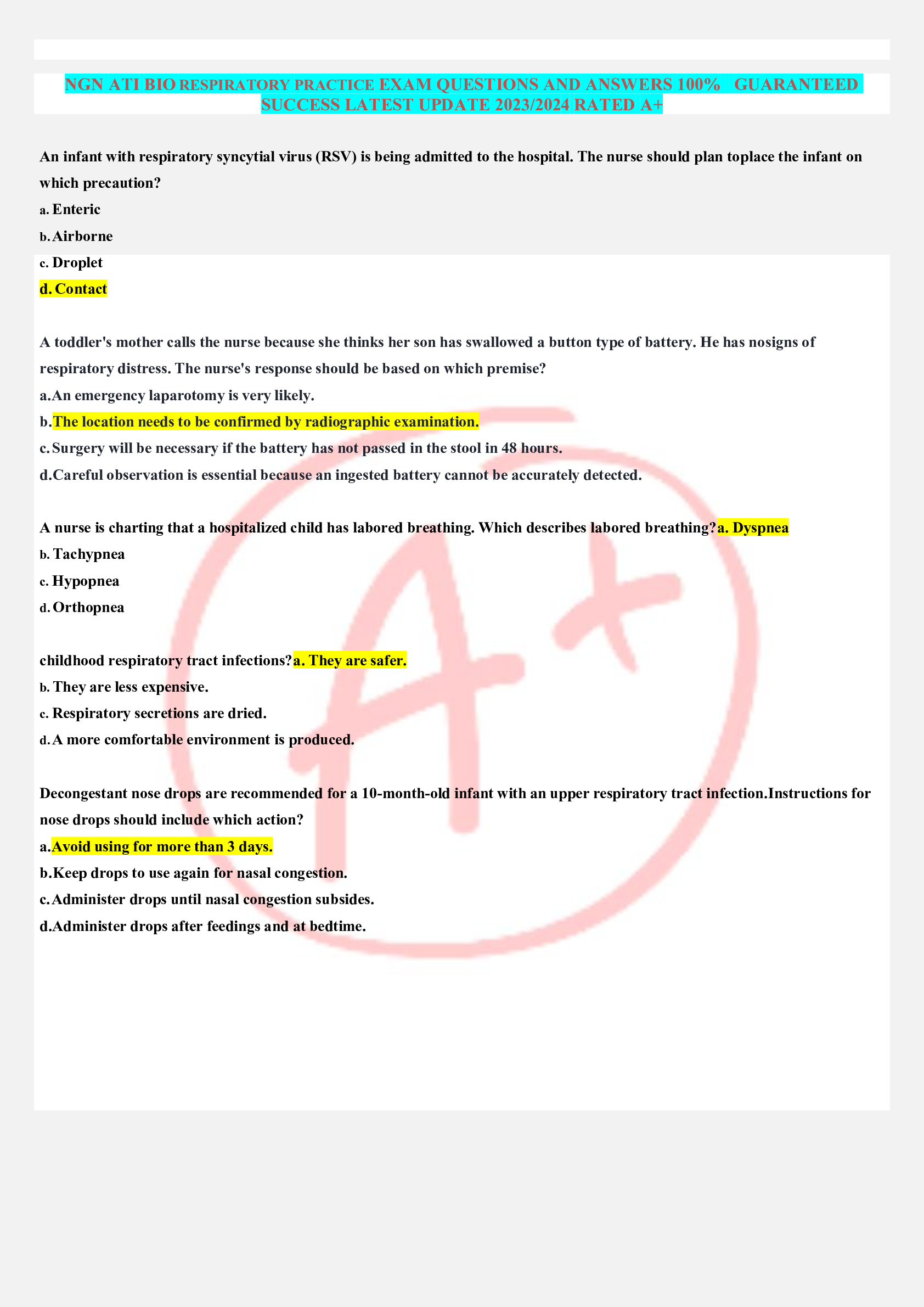

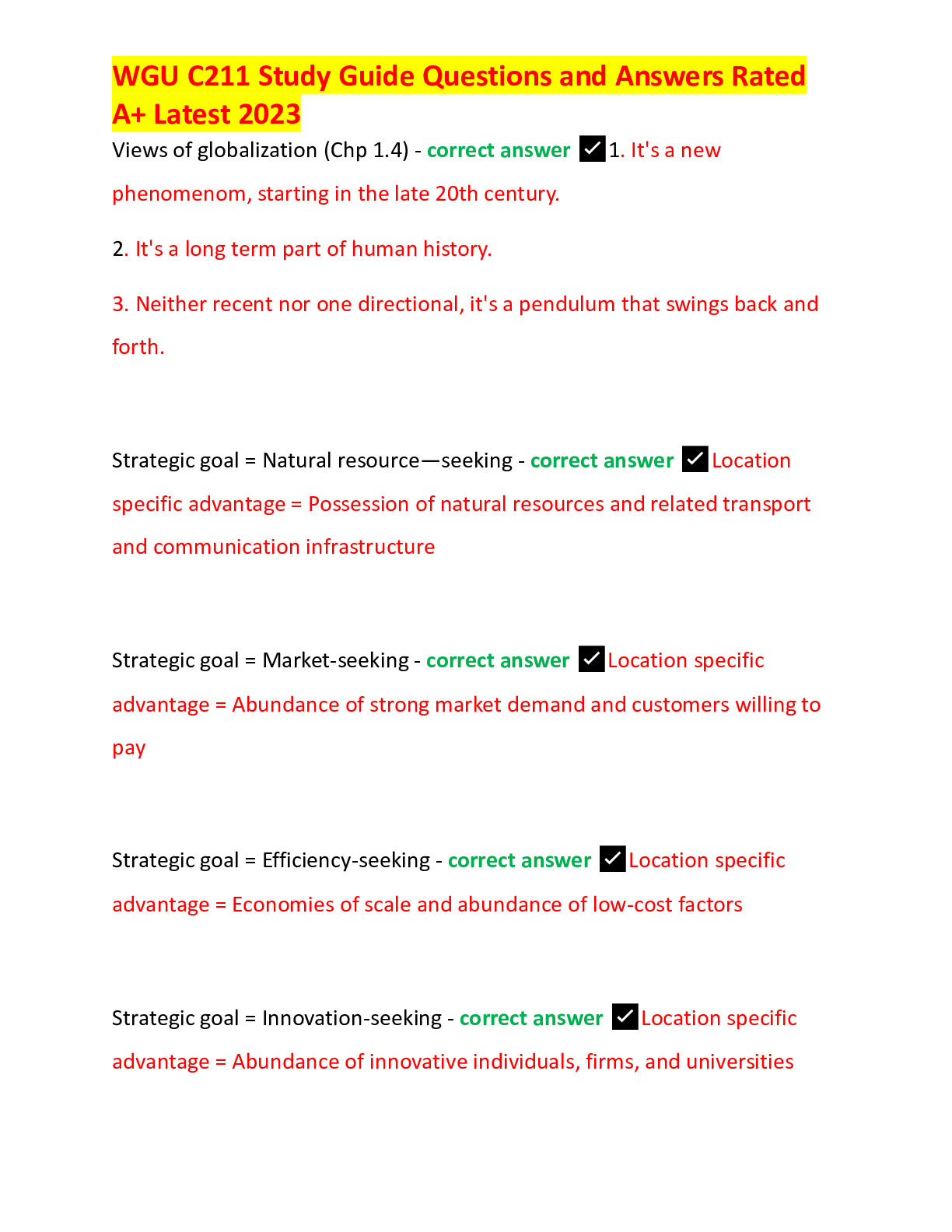
.png)

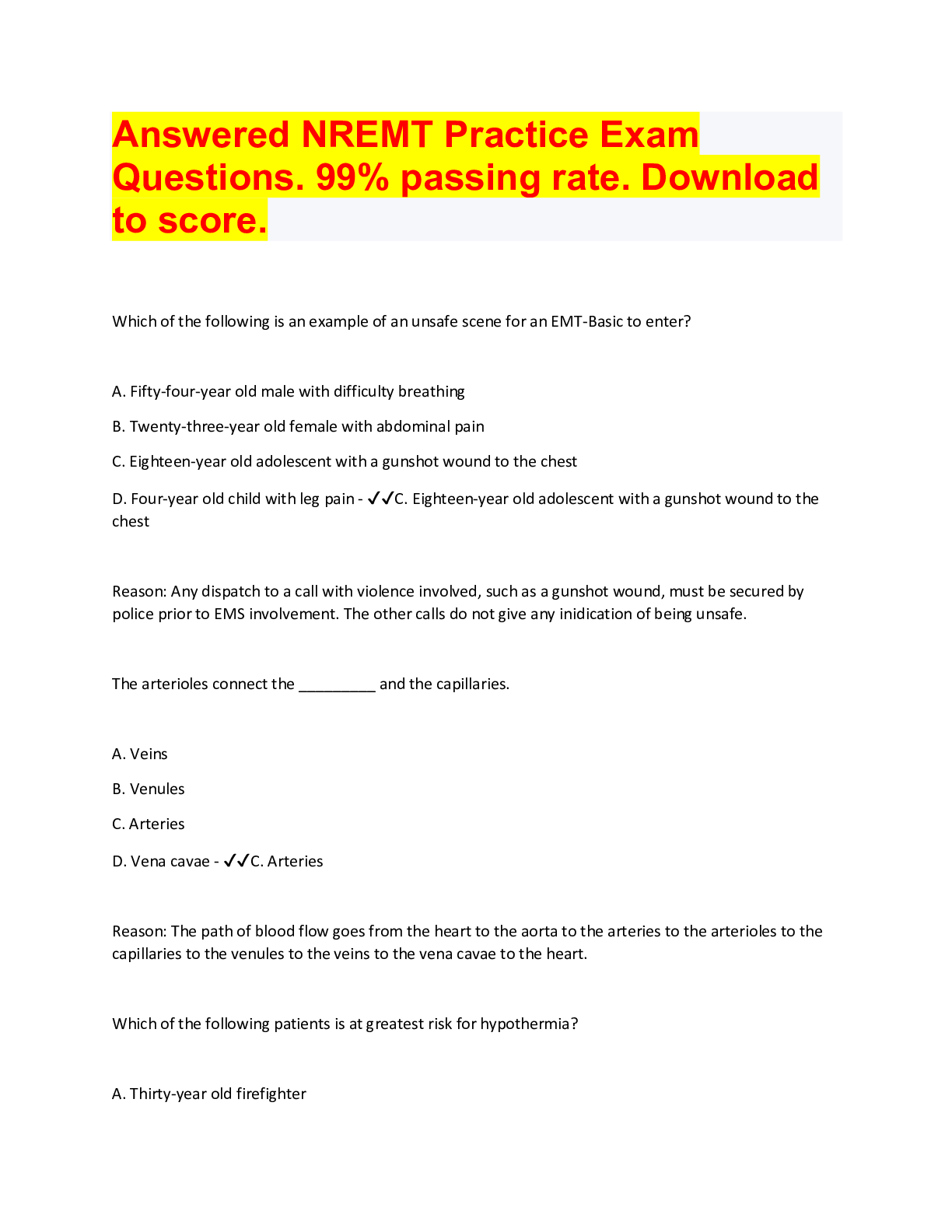
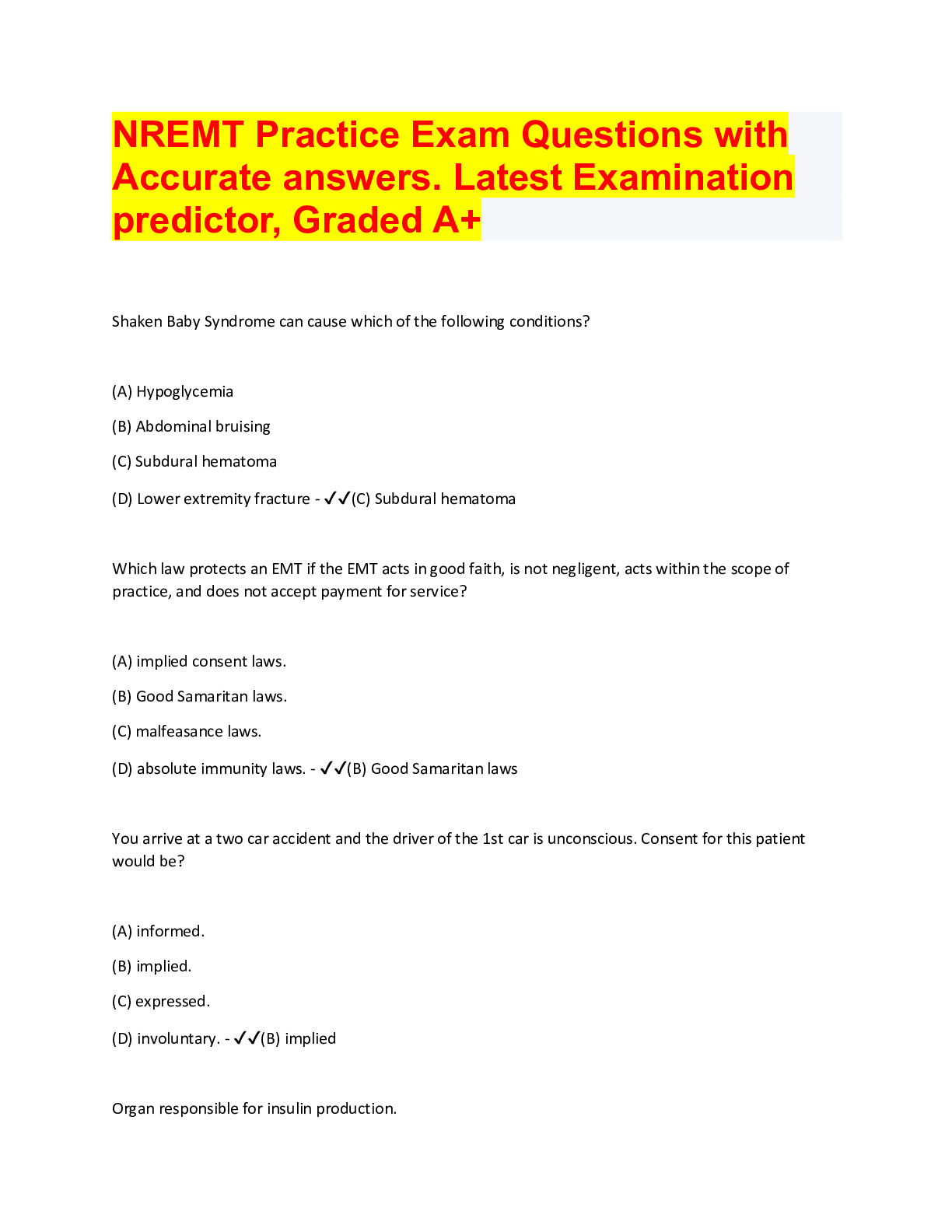
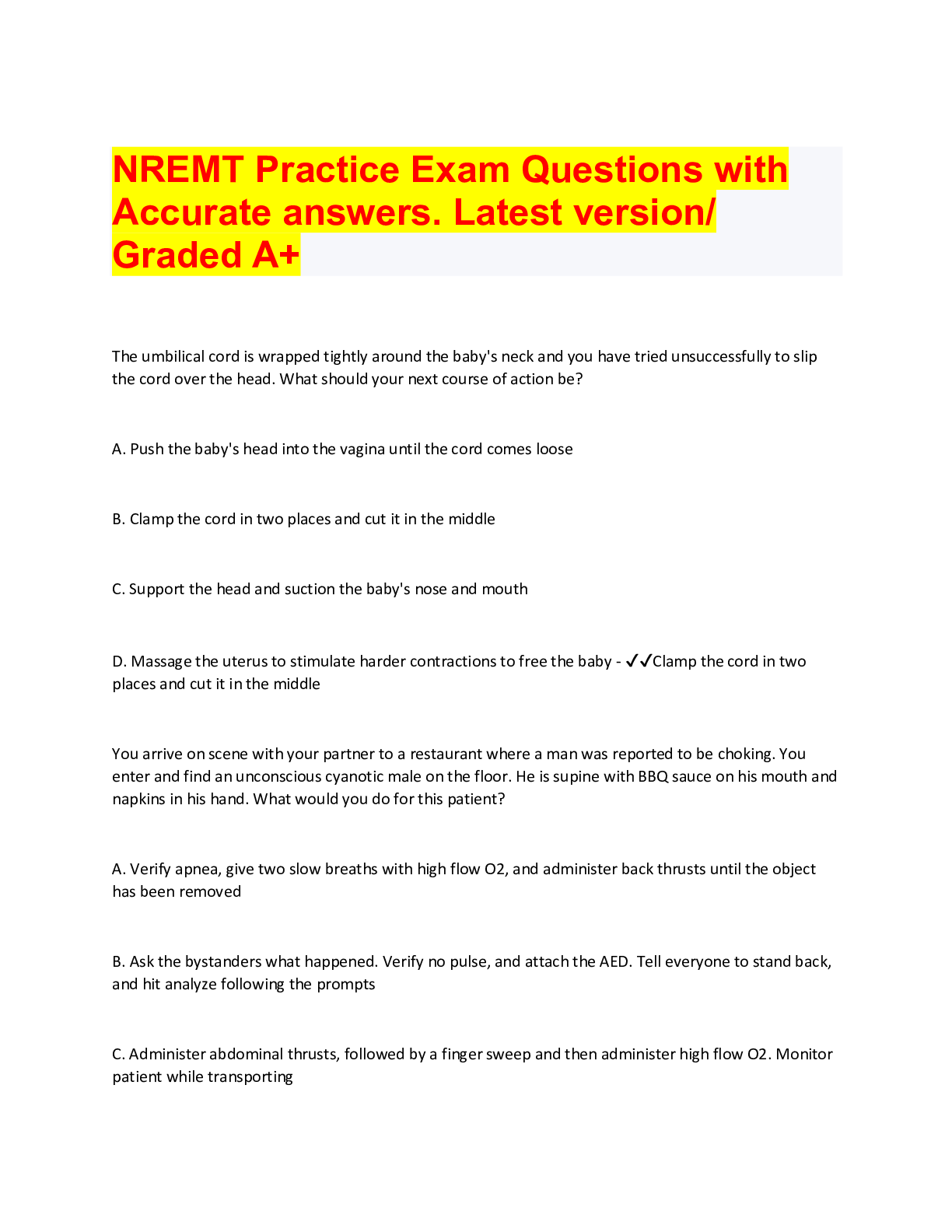
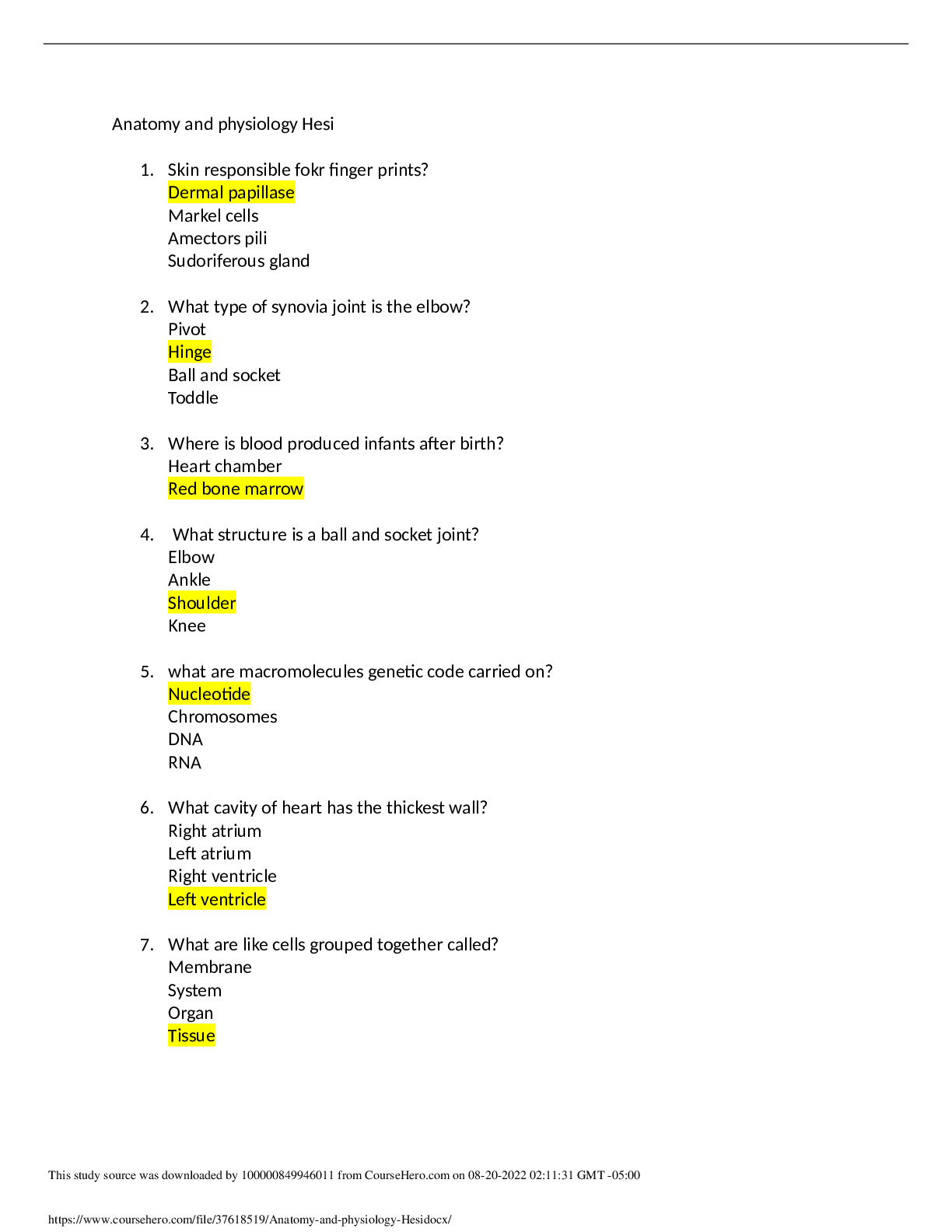
.png)
.png)
.png)

.png)
.png)
.png)
